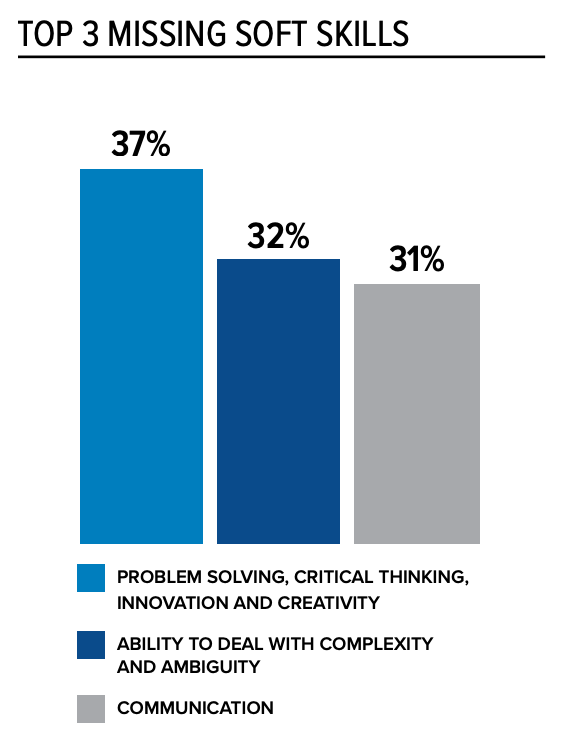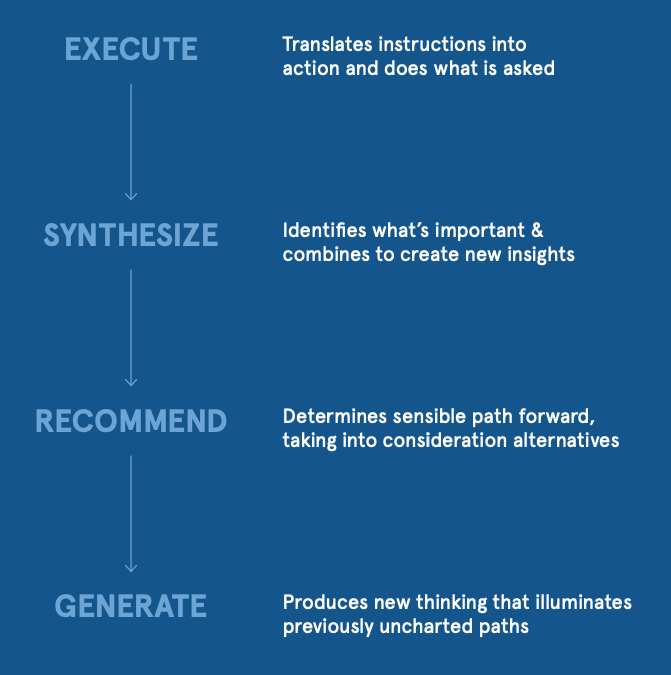This one skill makes you more hireable: Here’s how to develop it

According to the experts, it’s not tech skills that will be in demand in the future: it’ll be all the skills that make you human.
And among the ‘soft skills’ in high demand, it’s critical thinking, problem solving, innovation and creativity that’s most needed, according to the Society for Human Resources Management.

Related story: Why tech skills aren’t the key to success in a digitalising workplace
Related story: 10 skills you won’t need by 2022 — and 10 you will
Related story: Experience, education, training are useless to employers without this one skill
According to Swinburne University professor Sean Gallagher, neither tech skills nor increased study will keep you in a job in the future.
“In increasingly digital environments, we need to be increasingly human in order to be able to compete, and to work effectively,” Gallagher told the Yahoo Finance All Markets Summit in September.
But can problem solving and critical thinking skills be taught?
According to professional development and online resource platform Zarvana founder Matt Plummer, yes, it can.
“It’s time to reject the notion that critical thinking is either an innate gift that can’t be developed or a skill learned only through experience,” he wrote in the Harvard Business Review.
As outlined in Zarvana’s Critical Thinking Roadmap, critical thinking can be broken down into four key phases: ‘execute’, ‘synthesise’, ‘recommend’ and ‘generate’.

Phase 1: Execute
New team members not used to thinking for themselves will often be in the phase where they’ll just do as they’re told, Plummer wrote in the Harvard Business Review: even converting instructions into actions requires reasoning, decision-making and problem-solving, he said.
If you can complete all parts of the assignments on time and close to the standard expected of you, you’re on the ball. When you’re at the stage where you start making suggestions for how to improve your work, you’re ready for the next phase, Plummer added.
Phase 2: Synthesise
In this phase, workers sort through a range of information and figure out what’s important – so for instance, summarising key takeaways after an important meeting.
“Synthesis is a skill that, like any other, grows with practice,” Plummer said.
If you can identify the important insights, cut out the unimportant information, assess the importance of the insights and communicate them effectively, this is a good sign.
Phase 3: Recommend
Here, you make decisions based on the information you’ve acquired.
“The primary goal is for team members to consistently make recommendations that are well-founded — even if their recommendations don’t align with [a manager’s] opinion,” said Plummer.
If you can provide recommendations when questions are raised (rather than depending on your manager to come up with the answers), can assess the downsides of your own recommendations, and can back up your recommendations, you’re in a good place.
Phase 4: Generate
In this phase, you’re on your own. “To operate in this phase of thinking, team members must be able to create something out of nothing,” said Plummer.
What’s key here is translating the vision or goal into a project that can be executed.
This phase is measurable by your ability to “propose high-value work” that doesn’t follow from what you’re already doing; if you can convert your own and others’ visions into tangible plans; and if you’re able to answer questions your manager doesn’t know how to answer.
Depending on where you’re at, you might need to lean on your boss’ thinking for this phase – but don’t be afraid to back yourself and your own ideas.
“Many people don’t make it to this phase because they don’t give themselves permission to do the kind of open-ended thinking required,” Plummer said.
Try to flex this ‘muscle’ by keeping a list of ideas on improvements for a project, department or various parts of the business, and share this with your manager.
Make your money work with Yahoo Finance’s daily newsletter. Sign up here and stay on top of the latest money, news and tech news.

 Yahoo Finance
Yahoo Finance 
